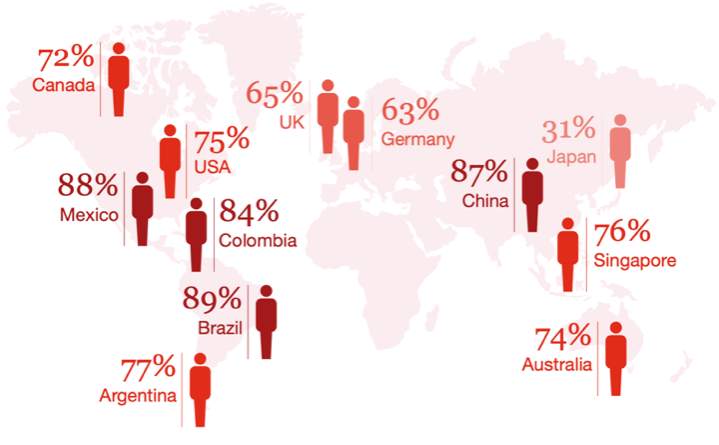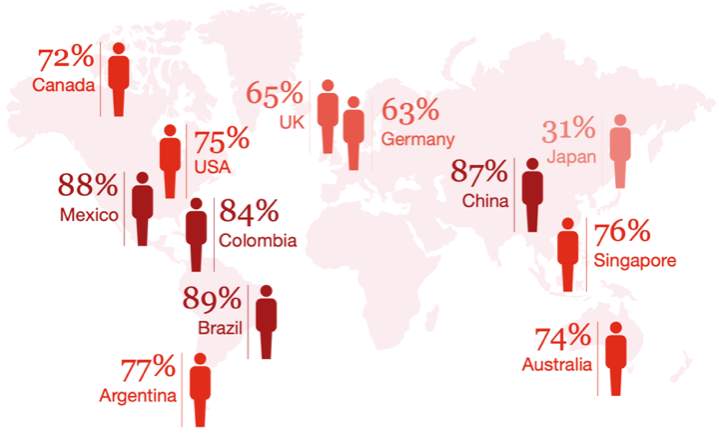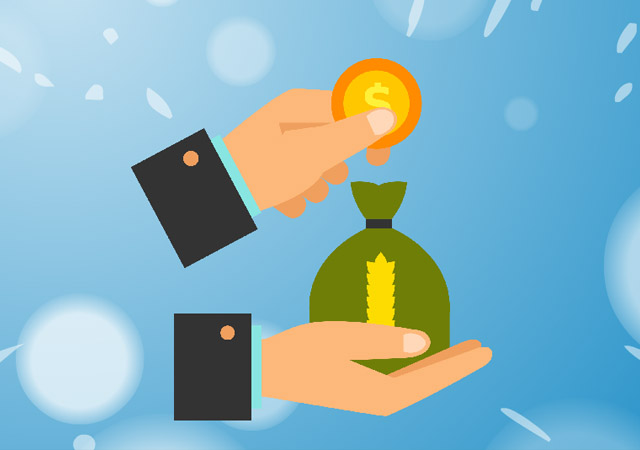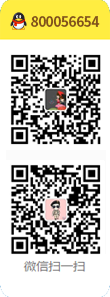背景(Background Information):曼彻斯特大学(The University of Manchester),Msc International Fashion Retailing专业,Multi-Channel Marketing课程论文。
Lecturer评语:A well-presented essay. Good discussion of the integration of channels in pop ups, with good use of the examples and evidence of critical analysis. Well referenced but could be improved with greater explanation/discussion of theoretical concepts in the literature.
The Role of the Physical Store in Multichannel Marketing
Introduction
Footfall in the high street has been declining because of a digitalisation trend (McKinsey, 2019). According to Mintel (2019), over half of shoppers prefer shopping online to in-store (Figure1). Even though consumers are shifting from offline to online, there is still a range of retailers (e.g. pure players, department stores, and independent brands) investing in their physical presence, especially pop-ups (BoF, 2019). The pop-up is considered an important component in the marketing mix, recognising its contribution to brand experiences and brand communication (Alexander et al., 2018). This paper uses examples ranging from start-ups to established retailers to examine the roles and functions of pop-ups, based on a multichannel marketing scenario.
Figure 1: consumers shopping preference
Source: Mintel, November 2019
Definition of the pop-up and multichannel marketing
The pop-up refers to a physical marketing channel that exists for a limited period. (Rudkowski, J. et al. 2019). In the context of marketing, channels refer to touchpoints where consumers have contact with the brand (Baxendale et al., 2015). Nowadays, brand contact is progressing from single touchpoint to multiple platforms ( Ailawadi and Farris, 2017). This consumer behavioural change emboldens retailers to evolve towards a multichannel marketing(MCM) strategy (Chen and Lamberti, 2016). A comprehensive definition of MCM is to provide customers with a product, service or information by coordinating more than one channel (Rangaswamy and Van Bruggen, 2005). In terms of the functions of the pop-up, they are multiple. Some are similar to other channels (e.g. selling), while the others are unique (e.g. testing market) (Lowe et al., 2018). In the scope of MCM, the key roles of pop-ups are to complement the shortages of other touchpoints, and to connect traffic with different channels.
Pop-ups as a complementary channel for brand experiences
Figure 2 customer experience helps people decide between buying options
Source: PWC, 2019
Consumers value experience-orientated shopping more than they have before(Flacandji and Krey, 2020). Figure 2 reveals that on average, 73% of all people are influenced by experiences when making purchase decisions (PWC, 2019). Researchers have concluded that consumer experiences involved intellectual, sensory, affective, and behaviour constructs (Huaman-Ramirez and Merunka, 2019; Xie et al., 2017). Retailers could use pop-ups as a tool to create exceptional experiences to develop brand associations, as brand associations are able to differentiate one brand from others (Lemon and Verhoef, 2016).
Compared to long-lasting brick-and-mortars, pop-ups are ephemeral, and they are usually innovative in design and concept (Warnaby and Shi, 2018). Many brands head for pop-ups despite owning physical stores. An example for this is Louis Vuitton (LV). In 2019, the brand launched a “Time Capsule” collection in Taiwan (LV, 2019). The store was designed as a museum (Figure3). The brand coordinated video, pictures, context and objects to offer an exploring experience about their historical moments and highlighted products. The pop-up created intellectual associations about its heritage, they are not what a regular LV store could offer. However, as the brand experiences are multi-sensational (Flacandji and Krey, 2020), “Time Capsule” appeared to be a plain exhibition, referring to only cognitive experience and the related affected experience. Although technological elements (e.g. VR) could diffuse in the curation of immersive experiences (Högberg et al., 2019; Jung et al.,2019), the brand, however, utilized none of them in the pop-up.
In contrast to online channels, pop-ups manifest live brand experiences (Lowe and Sands, 2018). Consumers could capture an actual feeling about how the brand is like, which could be difficult to produce on websites or Apps. Moreover, pop-ups need no commitment to long leasing, making them relatively cheaper than normal stores (Jones et al., 2017). Many online-only retailers now embrace a temporary format when seeking a physical profile(SLUIS, 2014.). To illustrate, Tmall, the Chinese biggest online marketplace, ran “Smart Store” in 2017 (Digiday, 2017). In the “Smart Store”, visitors could use interactive technologies (e.g. Magic mirror) to view products and complete check-out. In Comparison with “Time Capsule”, “Smart Store” creates not just an intellectual about products, but also sensory and physical experiences, achieved by interacting with products and completing purchases. (Huaman-Ramirez and Merunka, 2019) Finally, it could intrigue a more positive affected experience of the retailer.
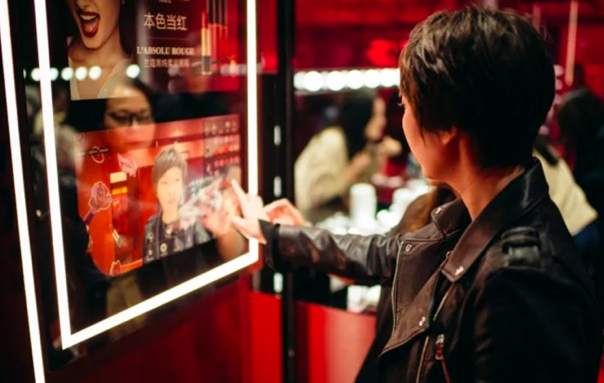
Figure 4 a consumer interacts with "magic mirror"
Source: Digiday, 2017
Pop-ups as a relational bridge to other channels
The modern consumers use different channels across their shopping journey (Lemon and Verhoef, 2016). For instance, Showroomers collect product information in-store and then purchase online (Arora et al., 2017). This hybrid consumer behaviour brings a challenge to channel management, but the following opportunity is that the brand can communicate with targeted audiences(TA) through multiple endpoints (Chen and Lamberti, 2016). In-store communication in pop-ups is temporary, but a profound outcome can be achieved through building connection to other channels (e.g. email, website, and social media) (Lowe and Sands, 2018). However, the consumer-brand relationship will then rely on the marketing outcomes of other channels. (Coelho et al., 2018)
The short-lived characteristic of pop-ups makes them intrinsically attractive to consumers (Klein et al. 2016). Hence, it could be used to acquire new consumers. E-commerce companies use pop-ups to increase traffic to online sites (Yrjölä et al., 2018). For example, pure-play start-ups Lovehoney (Figure5) and Hush (Figure 6) implemented pop-ups to provide a real-life shopping experience for visitors. Moreover, they brought new customers to their digital world by introducing them to order online and subscribe to their newsletters. Directing offline consumers to email and website touchpoint continues the brand-consumer communication when pop-ups disappear (Rudkowski et al., 2019). However, in such a case, the linkage with social media is what they could have further improved upon. Social media is a popular channel where consumers search for information (Tajudeen et al., 2018). These pop-ups could be better designed to intrigue social media buzz around the brand (Lowe et al., 2018). Consequently, the possibility for retailers to reach prospecting groups is maximised. Department store Selfridges (2019) demonstrates a good example in connecting pop-ups with social media. They partnered with Instagram to operate “The Instagram Edit”. Exclusive collections were showcased in the pop-up and could be brought on Instagram. The launch converted visitors to social media and involved them in the Instagram community.
Conclusion
The change in consumer needs and habits motivates retailers to adopt MCM strategies to better satisfy them (Yrjölä et al., 2018). The pop-up, owing to its moving feature, plays a powerful role in creating a unique offline brand experience for consumers, which in turn adds up to brand associations (Lowe et al., 2018). Therefore, whether retailers have physical stores or not, they could utilize pop-ups to construct their own competitive advantages. Another role of pop-ups is the relational bridge. By turning the short-term footfall in pop-ups to other touchpoints (Lowe and Sands, 2018), the company could maintain a durable relationship with consumers across multiple channels.
Reference List
-
Alexander, B., Nobbs, K. and Varley, R. (2018), "The growing permanence of pop-up outlets within the international location strategies of fashion retailers", International Journal of Retail & Distribution Management, Vol. 46 No. 5, pp. 487-506.
-
Arora, S., Singha, K. and Sahney, S. (2017), "Understanding consumer’s showrooming behaviour: Extending the theory of planned behaviour", Asia Pacific Journal of Marketing and Logistics, Vol. 29 No. 2, pp. 409-431.
-
Ailawadi, K.L. and Farris, P.W. (2017). Managing Multi- and Omni-Channel Distribution: Metrics and Research Directions. Journal of Retailing, 93(1), pp.120–135.
-
Baxendale, S., Macdonald, E.K. and Wilson, H.N. (2015). The Impact of Different Touchpoints on Brand Consideration. Journal of Retailing, 91(2), pp.235–253.
-
Business of Fashion (2019) How Temporary Pop-Ups Became a Permanent Strategy. Available at: https://www.businessoffashion.com/articles/professional/pop-ups-retail-real-estate-disruption, (Accessed: 22 February 2020).
-
Chen, S. and Lamberti, L. (2016). Multichannel marketing: the operational construct and firms’ motivation to adopt. Journal of Strategic Marketing, 24(7), pp.594–616. [online]. Available from: http://www.tandfonline.com/doi/abs/10.1080/0965254X.2016.1148759.
-
Coelho, P.S., Rita, P. and Santos, Z.R. (2018). On the relationship between consumer-brand identification, brand community, and brand loyalty. Journal of Retailing and Consumer Services, 43, pp.101–110.
-
Digiday (2017) Alibaba tests 60 futuristic pop-up stores across China for Singles Day. Available at: https://digiday.com/marketing/alibaba-tests-60-intelligent-pop-stores-first-time-around-singles-day/(Accessed: 23 February 2020).
-
Flacandji, M. and Krey, N. (2020). Remembering shopping experiences: The Shopping Experience Memory Scale. Journal of Business Research, 107, pp.279–289.
-
Högberg, J. et al. (2019). Creating brand engagement through in-store gamified customer experiences. Journal of Retailing and Consumer Services, 50, pp.122–130.
-
Huaman-Ramirez, R. and Merunka, D. (2019), "Brand experience effects on brand attachment: the role of brand trust, age, and income", European Business Review, Vol. 31 No. 5, pp. 610-645.
-
Jung, J. et al. (2019). Consumer experiences of virtual reality: Insights from VR luxury brand fashion shows. Journal of Business Research.
-
Jones, P., Comfort, D. and Hillier, D. (2017), "A commentary on pop up shops in the UK", Property Management, Vol. 35 No. 5, pp. 545-553.
-
Klein, J.F. et al. (2016). Linking pop-up brand stores to brand experience and word of mouth: The case of luxury retail. Journal of Business Research, 69(12), pp.5761–5767.
-
Lemon, K.N. and Verhoef, P.C. (2016). Understanding Customer Experience Throughout the Customer Journey. Journal of Marketing, 80(6), pp.69–96.
-
Louis Vuitton (2019) Time capsule exhibition in Taipei. Available at: https://eu.louisvuitton.com/eng-e1/articles/time-capsule-exhibition-taipei(Accessed: 23 February 2020).
-
Lowe, J., Maggioni, I. and Sands, S. (2018). Critical success factors of temporary retail activations: A multi-actor perspective. Journal of Retailing and Consumer Services, 40, pp.74–81.
-
McKinsey & Company (2019). Perspectives on retail and consumer goods, Industries Insight. [Online]. Available at: https://www.mckinsey.com/~/media/McKinsey/Industries/Retail/Our%20Insights/Perspectives%20on%20retail%20and%20consumer%20goods%20Number%207/Perspectives-on-Retail-and-Consumer-Goods_Issue-7.ashx (Accessed: 20 February 2020).
-
Mintel (2019). Digital Platforms and the Customer Journey - UK - February 2020, Market Research Report. [Online]. Available at: https://reports.mintel.com/display/987732/ (Accessed: 20 February 2020).
-
Poon, P. and Zhang, W. (2017), “Brand experience and customer citizenship behavior: the role of brand relationship quality”, Journal of Consumer Marketing, Vol. 34 No. 3, pp. 268-280
-
PWC (2019). Experience is everything, Market Research Report. [Online]. Available at: https://www.pwc.com/us/en/advisory-services/publications/consumer-intelligence-series/pwc-consumer-intelligence-series-customer-experience.pdf (Accessed: 25 February 2020).
-
Rangaswamy, A., & Van Bruggen, G. H. (2005). Opportunities and challenges in multichannel marketing: An introduction to the special issue. Journal of Interactive Marketing, 19, 5–11.
-
Rudkowski, J. et al. (2019). Here Today, Gone Tomorrow? Mapping and modeling the pop-up retail customer journey. Journal of retailing and consumer services.
-
Tajudeen, F.P., Jaafar, N.I. and Ainin, S. (2018). Understanding the impact of social media usage among organizations. Information & Management, 55(3), pp.308–321.
-
Warnaby, G. and Shi, C. (2018). Pop-up Retailing: Managerial and Strategic Perspectives. 1st ed. 2018. Cham: Springer International Publishing.
-
Selfridges (2020) Doing it for the ’Gram: The Instagram Edit. Available at: https://www.selfridges.com/GB/en/features/articles/selfridges-loves/the-instagram-edit--theofficialselfridges/(Accessed: 23 February 2020).
-
SLUIS, S., 2014. E-commerce Parachutes into Stores with Pop-Up Shops: CRM. Customer Relationship Management, 18(2), pp. 15.
-
Yrjölä, M., Saarijärvi, H. and Nummela, H. (2018), "The value propositions of multi-, cross-, and omni-channel retailing", International Journal of Retail & Distribution Management, Vol. 46 No. 11/12, pp. 1133-1152.
以上就是本篇dissertation代写范文全部内容,范文内容和格式仅供留学生参考学习,不得抄袭,如有dissertation代写需要,请咨询网站客服。

